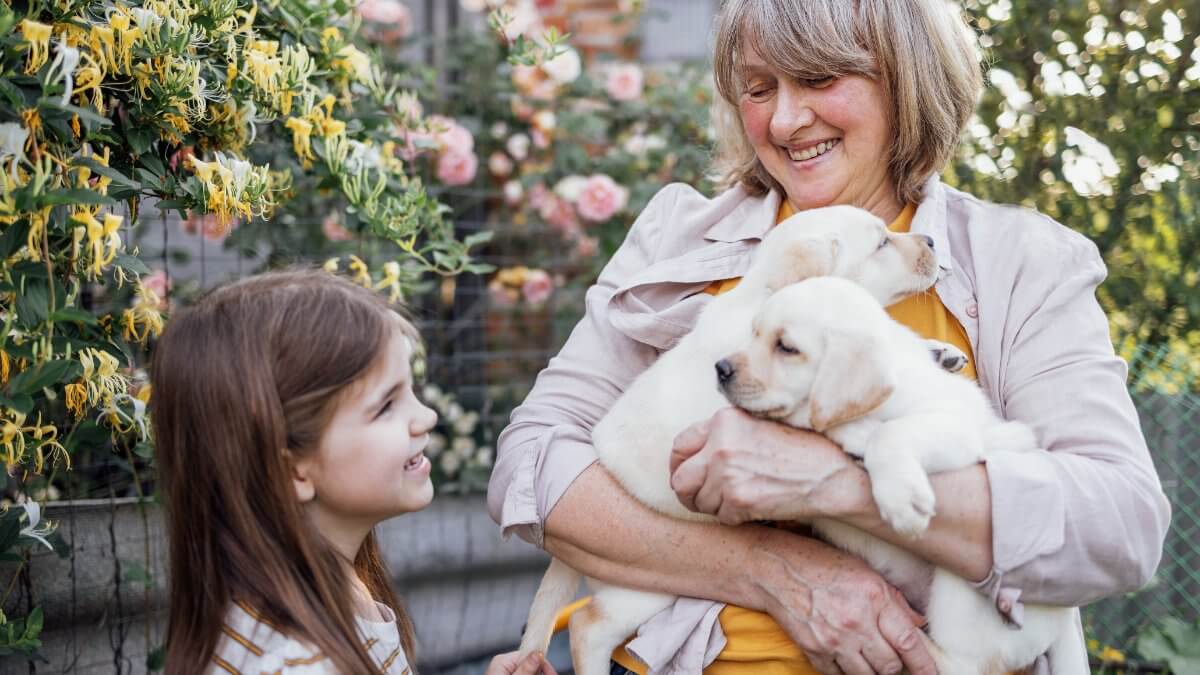
Home » Why the Word “Breeder” Might Not Mean What You Think—And Why It Matters

The word “breeder” has taken a beating in recent years. It’s been used as shorthand for everything from unregulated puppy mills to casual backyard litters, to the careful and committed work of dedicated Preservation Breeders. But lumping all these very different practices under one word is not just unfair; it’s misleading, and it harms both dogs and the people who care about them most.
It’s time to set the record straight: not all breeders are the same, and the distinction between them isn’t minor; it’s massive.

Say the word “breeder” in a crowded room and watch the reactions. Some people picture a run-down, wire-floored kennel where dozens of dogs churn out puppies with little regard for health or welfare. Others imagine someone down the street who decided their dog was “so cute” it just had to have puppies. And unfortunately, these scenarios do exist.
Backyard breeders, accidental litters, and large-scale commercial breeding operations often prioritize profit (fluffy Frenchies and the seemingly never-ending desire for doodles), novelty (merle Bull Terriers), or convenience over the long-term health, behavior, and purpose of the dogs they produce. They may not test for inherited diseases, they most likely do not raise puppies in enriching environments, and they rarely provide support for those dogs after they leave.
That’s where the confusion, and the damage, begins. Because there’s another kind of breeder out there, and they couldn’t be more different.

Preservation Breeders are not just “dog people.” They are stewards of history, genetics, and purpose. These Breeders dedicate their lives to maintaining the integrity, health, and longevity of purebred dogs, not for profit, but out of passion, responsibility, and a profound respect for the breeds they love.
Preservation Breeders adhere to strict codes of ethics set by breed-specific parent clubs and organizations like the American Kennel Club (AKC). They health test extensively, study pedigrees for generations, and make breeding decisions based on temperament, conformation, and long-term soundness. Many of them show their dogs in Conformation and Performance events to prove they meet Breed Standards not just in looks, but in function.
Their goal? To produce dogs that are healthy in body and mind who exemplify the traits that made their breed valuable in the first place, whether that’s retrieving waterfowl, herding sheep, keeping barns clear of vermin, or curling up as dignified companions.

When all breeders are painted with the same brush, the public often assumes the worst. This leads well-meaning adopters to avoid Preservation Breeders altogether, turning instead to rescues or shelters. And while adoption is a noble path, it isn’t the right fit for everyone, or for every dog.
Here’s what gets overlooked: dogs end up in shelters because of poor breeding practices, and sometimes via unethical rescue groups (that’s a whole other story), not because Preservation Breeders have failed. Ethical breeders take back the dogs they’ve bred, at any age, for any reason. Preservation Breeders don’t contribute to the shelter population—they reduce it. Backyard breeders and puppy mills do not offer that kind of lifetime commitment.
What’s more, as demand for dogs continues to rise and breeding becomes more maligned, fewer Preservation Breeders are able or willing to continue their work. Without them, entire breeds could disappear, especially the rare ones not often seen outside of dog shows or specific working communities.

It’s not just semantics. Language shapes perception. When we talk about “breeders” as if it’s a dirty word, we throw decades of thoughtful, science-backed, ethical work under the bus. The term needs unpacking. We should say what we mean, and mean what we say.
Are we talking about someone producing trendy designer crosses in their backyard without a health guarantee or a plan? That’s not a Preservation Breeder.
Are we referring to someone who can recite their dogs’ pedigrees for five generations, spends the money on any and all suggested health tests for their breeds, who flies across the country to meet the right stud dog? That’s a Preservation Breeder.
These are not the same people. Their goals are different. Their outcomes are different. And their impact on the canine world couldn’t be more distinct.

If you’re looking for a dog, educate yourself about the breeder’s practices. Ask for health testing results. Inquire about contracts, socialization, and lifetime support. A responsible breeder will welcome your questions. In fact, they’ll probably have a few for you.
A great place to start is with the parent clubs. These are the AKC clubs that represent various breeds, and there is a parent club for every AKC recognized breed. If you are a Labrador Retriever fan, or have thought about adding a Chihuahua to your life, look up the parent club to find a reputable breeder and a mentor who can discuss the breed with you to determine if it is a good fit.
Support breed preservation efforts by learning more about the incredible variety of dog breeds, especially those at risk of vanishing entirely. Attend a dog show. Talk to breeders who are open and transparent. You might be surprised at how much dedication is behind every well-bred pup.
Finally, challenge the narrative. The next time someone throws around “breeder” like it’s a dirty word, ask them: “what kind of breeder do you mean?”
Because in this conversation, details matter. And the future of healthy, sound, purposeful dogs depends on it.
